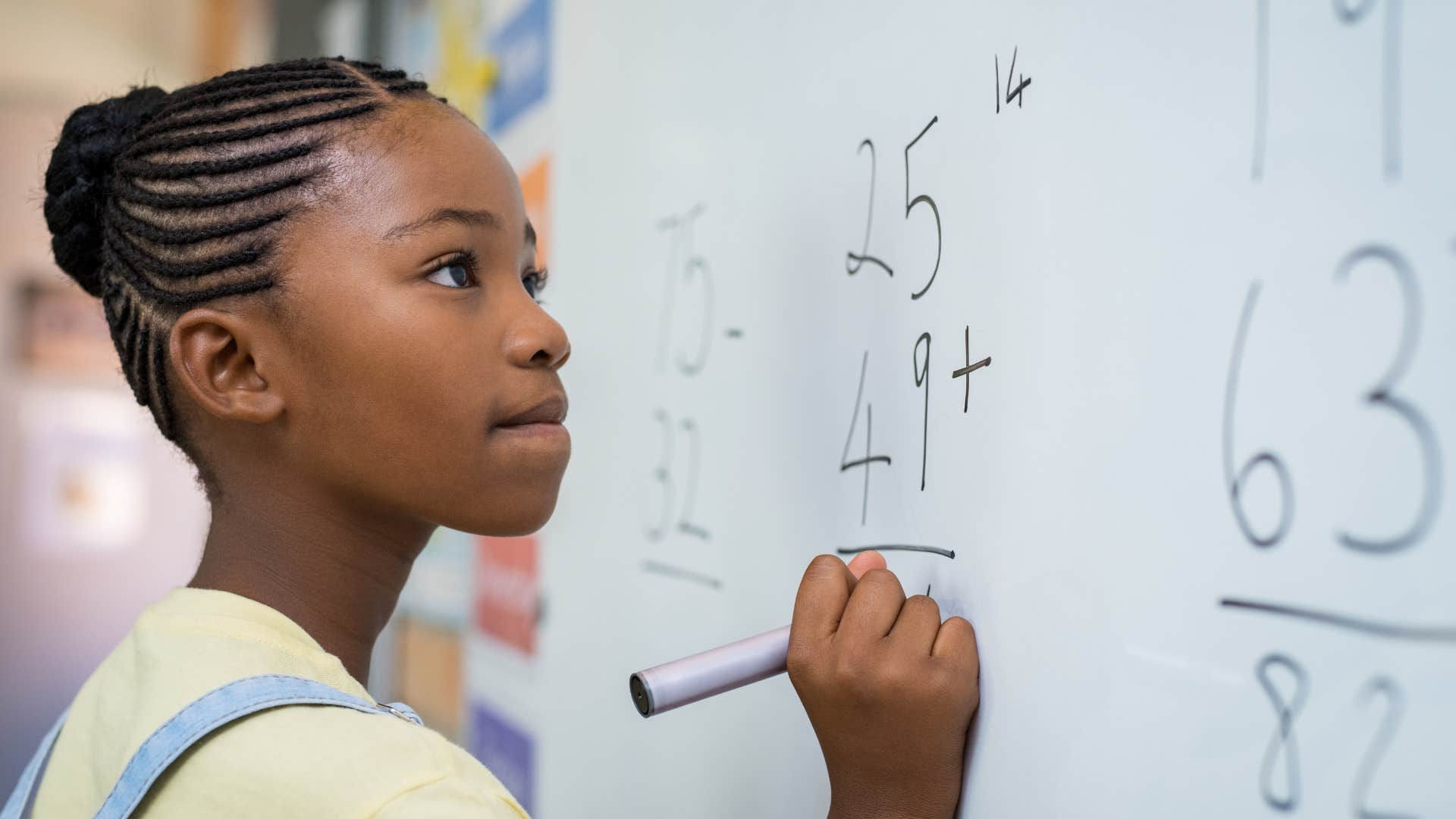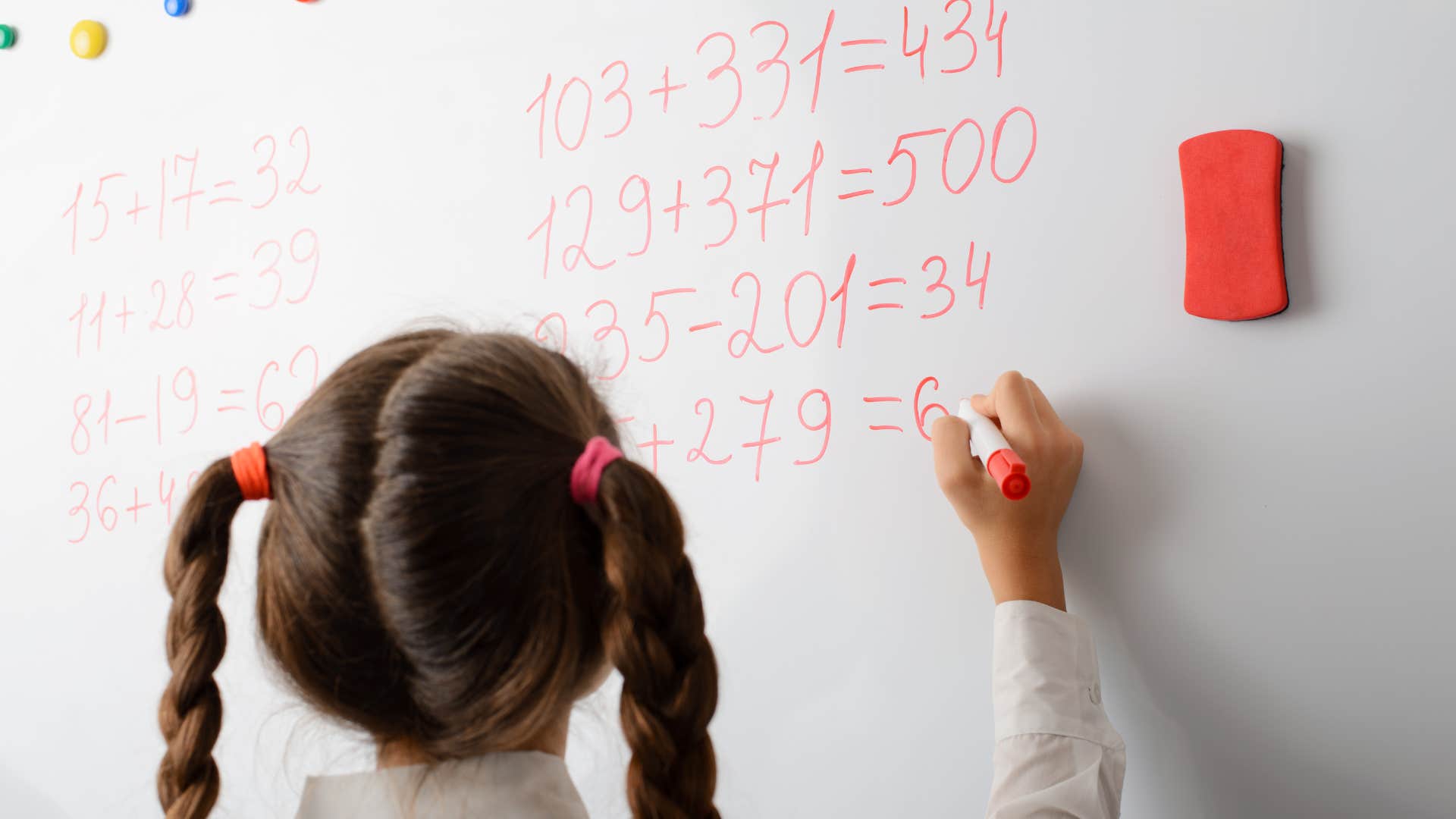11 Old-Fashioned Tricks Kids Today Are Not Taught In School That Would Save Them A Lot Of Time
These hacks make learning easy and fun.
 Rido | Shutterstock
Rido | Shutterstock Kids sometimes have a hard time in school, especially with what they're taught. It might be that they don't quite understand a concept or find a certain subject difficult to comprehend. But there are old-fashioned tricks kids today are not taught in school that would save them a lot of time, making complicated tasks much easier in the process.
Whether it's math problems, reading comprehension or everyday basic knowledge, knowing these tricks can be a game-changer. Bringing back teaching these easy to remember hacks helps kids grasp difficult concepts better and makes learning even more enjoyable.
Here are 11 old-fashioned tricks kids today are not taught in school that would save them a lot of time
1. The knuckle test
 Yuganov Konstantin | Shutterstock
Yuganov Konstantin | Shutterstock
Most kids today are not taught the "knuckle test" in school, but if they were, it would save them a lot of time and energy. The knuckle test is a mnemonic device used to figure out how many days are in each month. You simply make a fist, starting with January on your left pinky knuckle, labeling each knuckle and space in between as a month, going in order.
When this test is done, you notice that all the months that have 31 days land on your knuckles, while the months with 30 days or less land in the in-between space. It's also crucial to know that when you get to July, you go back to your initial pinky knuckle to label it August, and if using two hands, you start on the knuckle where both hands meet.
2. Multiplying by 9s finger trick
 Ground Picture | Shutterstock
Ground Picture | Shutterstock
One of the most common old-fashioned tricks kids today are not taught in school that would save them a lot of time is the multiplying by 9s finger hack. This finger trick allows people to multiply any number between 1 and 10 by 9, using only their hands.
Simply hold your hands in front of you, spreading your fingers out and assigning each finger a number from 1 to 10. Your left pinky finger should be 1 and right pinky finger should be 10. If you want to multiply 9 x 3, for example, you would put the third finger from the left down, using the digits left to find your answer: 27. That means you have 2 fingers before the one that's down, and 7 fingers on the right.
This trick saves time, yes, but is also beneficial for kids. As research professor Peter Gray advises, "Math is that school subject that we can't [fake] our way through. That's one thing that makes it so scary to so many. There are right and wrong answers to every question, no partial credit... The first step in coming to grips with math is to knock it off its pedestal."
3. Multiplying by 11s trick
 Gorodenkoff | Shutterstock
Gorodenkoff | Shutterstock
This trick is perfect for math beginners. According to math expert and teacher Neil Trivedi, it's easy to multiply two-digit numbers by 11 and get the answer. "Let's take a look at 23 x 11. It's really simple. You take the 2 and the 3, you split it up... Then, it's all about the middle number. You simply add the 2 and the 3, and you get 5," making the total 253.
The trick changes slightly for multiplying three-digit numbers and higher by 11. Let's say you want to multiply 567 x 11. It follows the same initial step, writing down the 5, but when you add 5 + 6, you only write 1 beside the 5 and you have to carry the other 1 above the 5.
Next, you add 6 + 7 with the same process. The 3 would go beside the 5 and 1, while the 1 gets carried above the 1 written above the 5. Then, you just simply place the 7 beside the 513, and add 5137 + 11 to get your answer of 6237.
4. The five-finger rule
 Skolova | Shutterstock
Skolova | Shutterstock
The five-finger rule is a tool teachers and parents can use to determine a child's reading level. As Scholastic Parents experts explain:
"Your child opens a book to the first page. They read the page and hold up one finger for every word they don't know or can't pronounce. The number of fingers they're holding up by the end of the page tells them if the book is the right level: 0-1 fingers: It's too easy; 2-3 fingers: It's just right; 4-5 fingers: It's too hard (or best read aloud with a buddy). Two to three fingers is the sweet spot. If they're holding up any more or less, that's a clue that they should try to find another book if they're reading independently."
Parents can also benefit from reading to their children. According to research conducted by Dominic Massaro, a professor emeritus in psychology, reading aloud to kids expands their vocabulary and creates higher intelligence. Plus, it's a great way to bond.
5. The number switch
 Dmytro Zinkevych | Shutterstock
Dmytro Zinkevych | Shutterstock
When learning division, the number switch trick can make everything much easier. This trick uses the inverse relationship between division and multiplication to ensure that, when doing division, you achieve the right answer.
You first have to identify the dividend, divisor, and quotient of the problem. For example, when trying to do 20 divided by 4, it equals 5, so you identify the 20 as the dividend, 4 as the divisor, and the 5 as the quotient. To check your answer, you need to multiply the quotient by the divisor, and if you get the dividend, you know you got it right.
6. The rule of 72
 fast-stock | Shutterstock
fast-stock | Shutterstock
The rule of 72 is one of the very old-fashioned tricks kids today are not taught in school that would save them a lot of time. And, in adulthood, these same kids will find it much easier to be financially independent and stable.
According to investing and economy expert Will Kenton, "The Rule of 72 is a formula used to calculate how long your investment will need to double in value, given its annual rate of return." The formula is quite simple. In order to calculate the amount of years it should take to double your investments, you would just divide 72 by the expected rate of return or annual interest rate.
This formula can help simplify the complex world of investing for individuals who want to understand it, but feel overwhelmed by it, and it can give kids a basic understanding of economics as they grow into adulthood.
7. The bunny ears method for tying shoes
 Kub The Shadow Simple Man | Shutterstock
Kub The Shadow Simple Man | Shutterstock
When learning how to tie their shoes, kids sometimes struggle with what lace goes where. But with the bunny ears method, it makes learning fun and simple. All it requires is kids creating a basic knot, crossing loops, and securely tucking each one under the other into a bow.
While not all kids struggle with tying their shoes, for those who find it a little more challenging, this trick is incredibly helpful.
8. The keep-change-flip method
 Vitalii Stock | Shutterstock
Vitalii Stock | Shutterstock
When learning how to divide fractions, students can learn quickly just how easy math can be if they arm themselves with a few tricks. The keep-change-flip method works by keeping the first number in the fraction, changing a division sign to multiplication, and flipping the last number in the fraction.
For example, if you're trying to divide 1/2 by 1/2, you would keep the first 1/2 as it is, change the division sign to multiplication, and turn the second 1/2 into 2/1. Then, you just multiply across, giving you the answer of 1.
9. The keyword trick
 fizkes | Shutterstock
fizkes | Shutterstock
For reading comprehension, the keyword trick is essential at helping kids understand exactly what they're reading.
Teacher and mentor Prity Mallick explained the method, saying, "Keywords are the most important words in a question. They hold the key to finding the relevant part of the passage. These are typically nouns and verbs; proper names; dates, years and numbers; words in italics or capitals; unique or unusual vocabulary. When you identify these keywords in the question, they can help guide your eyes to the matching section in the passage."
This technique involves skimming different texts for certain keywords that are found within the questions on a reading test. By identifying what keywords there are within the question and specifically looking for those in the passage, students can quickly and efficiently do well on these timed tests.
10. The butterfly method
 phBodrova | Shutterstock
phBodrova | Shutterstock
The butterfly method is yet another of the old-fashioned tricks kids today are not taught in school that would save them a lot of time. Mechanical engineer Tanya Zakowich gave a very basic example in a video that explains a simple way to multiply fractions.
She uses the example of 1/5 + 3/4. She first circles the 3 and 5, multiplying them to get 15; she then circles the 4 and 1 and multiplies them to get 4. She adds 15 + 4 to get 19, before multiplying the bottom numbers (5 x 4) to get 20, making the correct answer 19/20.
11. The multiplying by 12s trick
 Pressmaster | Shutterstock
Pressmaster | Shutterstock
When learning how to multiply by 12, kids find it easier to use a certain trick that highlights the distributive property of multiplication by emphasizing that 12 is considered 10 + 2. For example, with 12 x 7, you first multiply 10 x 7 which gives you 70; then, you multiply 7 x 2, which gives you 14. To get your answer, you add 70 + 14, which is 84.
Tricks and methods like this play a crucial role in making complicated concepts a lot easier for kids to learn and understand. And while Gen Z, in particular, is missing out on basic math like this, kids today don't need to, because these tricks are incredibly helpful and efficient.
Kamryn Idol is a writer with a bachelor's degree in media and journalism who covers lifestyle, relationship, family, and wellness topics.

